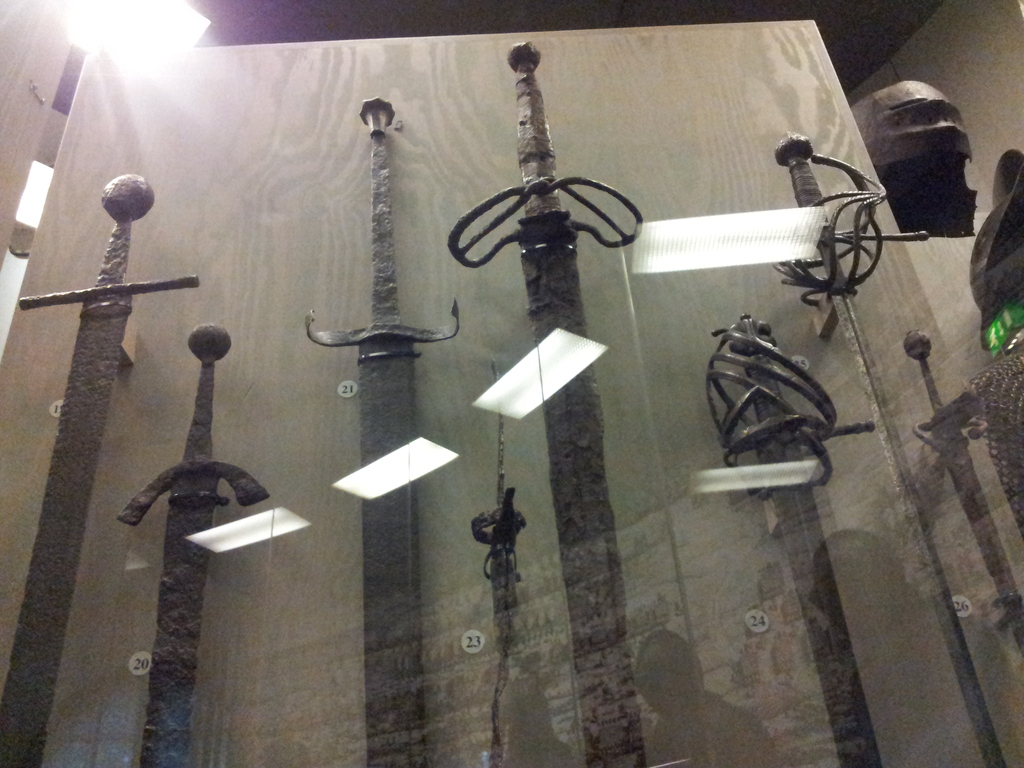"A very distinctive form of crossguard was, however, used in Scandinavia and perhaps also northern Germany. It takes the form of an open ring, looking rather like a pretzel, and is found on large hand-and-a-half swords whose guards bear some resemblance to later katzbalger guards, though with more twists to them". (page 16).
So the name for this sword could be "Pretzel-sword", or
Swedish "Kringla-svärd"
Danish: "Kringel-sværd" (older Danish) or "Kringle-sværd" (modern Danish, but it does sounds if the sword is being made of pastry, so I go for the old Danish as the word Kringel-kroge = eng. nooks and crannies).
These swords seems to be from around ~1500 AD.
I have found a pair of pictures of this "pretzel-type" of sword. This example was found within Säveån, Gothenburg, Sweden in 1928, now located at Göteborgs Stadsmuseum. [found where Säveån runs out into Göta Älv].
[ Linked Image ]
Source: http://62.88.129.39/carlotta/web/object/38291
Digressing: In 2012 they again found a sword in Säveån (probably a messer). On page 11, fig 9.
Source: http://samla.raa.se/xmlui/bitstream/handle/ra...uence=1%20
From Denmark a well-preserved example was located in Tudeå near Trelleborg on Zealand. So both swords were perhaps deliberately deposited in water. The publication doesn't give any measurements, but it sure looks like a 2-hander.
Code: National Museet nr. D 13492

Pretzel-sword from Tudeå.
Source: Behrend (1970). Nationalmuseets Arbejdsmark 1970.




